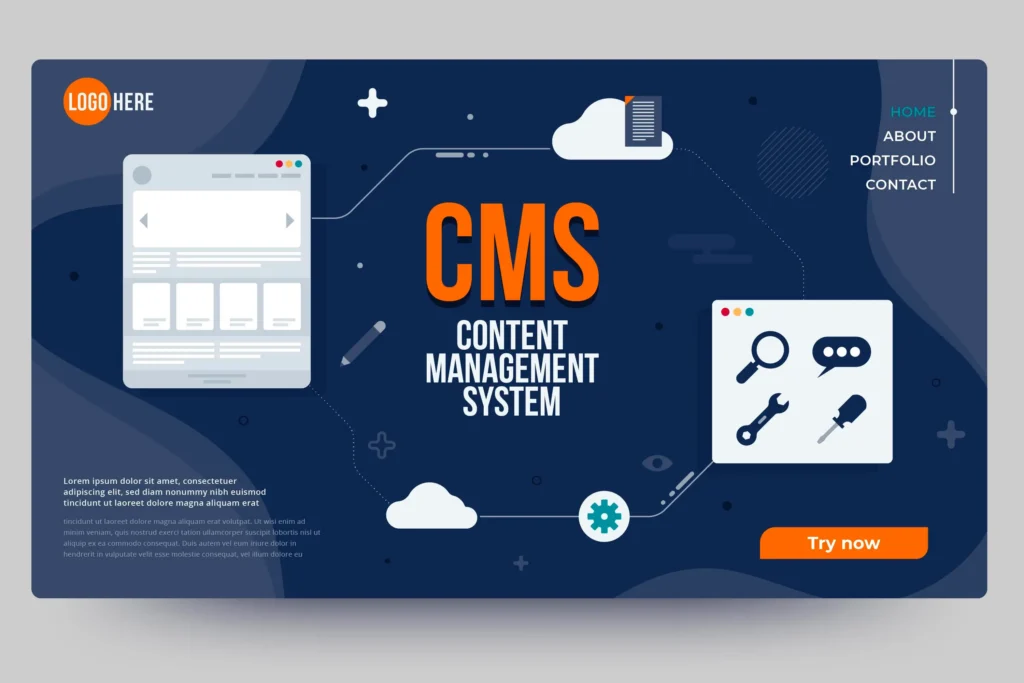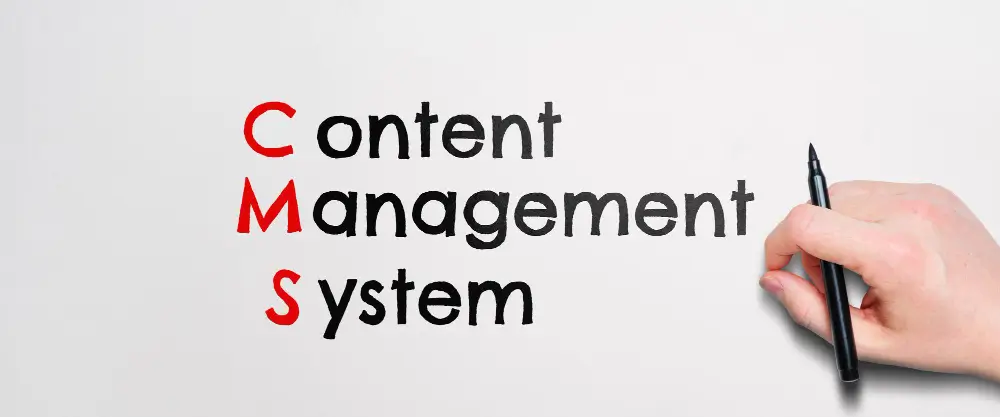What’s the best content management system for enterprise teams in 2025? The answer might not be as obvious as you think. Whether you’re managing thousands of pages, juggling multilingual content, or coordinating with dozens of editors across departments, choosing the right CMS can make or break your digital strategy. The best content management system for enterprise isn’t just powerful — it’s scalable, secure, and flexible enough to evolve with your business needs. In this guide, we’ll break down the top contenders and what truly sets them apart in a crowded, often confusing landscape.
What is an Enterprise CMS?
An Enterprise Content Management System (Enterprise CMS) is a powerful platform designed to help large organizations create, manage, store, and distribute digital content across multiple teams, channels, and regions. Unlike basic CMS platforms, an enterprise CMS supports high-volume content, complex workflows, advanced user permissions, and integration with other business systems (like CRMs, ERPs, and DAMs).
Key characteristics of an enterprise CMS:
- Scalability: Handles thousands of pages, users, and traffic spikes with ease
- Security: Offers enterprise-grade protection, SSO, and compliance tools
- Multisite & Multilingual Support: Manages content across regions, brands, and languages
- Custom Workflows & Roles: Controls who can create, edit, approve, or publish content
- API-First & Integration-Ready: Connects with marketing, analytics, and automation tools
- Governance & Version Control: Tracks changes, approvals, and rollback options
In short, an enterprise CMS isn’t just about publishing blog posts — it’s about empowering global teams to deliver consistent, compliant, and compelling content at scale.
Key Features of an Enterprise CMS Platform
Choosing the right enterprise CMS means looking beyond basic publishing tools. The best platforms are designed to support cross-functional teams, global operations, and strategic digital goals — all while staying secure, fast, and scalable.
Here are the most critical features to look for:
1. Advanced User Permissions & Role Management
Grant different access levels to content creators, editors, legal reviewers, and developers — ensuring the right people have the right control.
2. Customizable Workflows & Approvals
Define how content moves from draft to published, with built-in notifications, task assignments, and approval stages.
3. Scalability & Performance
Enterprise CMS platforms must handle millions of page views, thousands of assets, and large editorial teams — without slowing down.
4. Multisite & Multilingual Capabilities
Support multiple websites or microsites, each with localized content, domain control, and language-specific experiences.
5. API-First Architecture / Headless CMS Support
Integrate seamlessly with front-end frameworks, mobile apps, and third-party tools using flexible APIs.
6. Security & Compliance Tools
Includes Single Sign-On (SSO), encryption, audit trails, and support for compliance standards like GDPR, HIPAA, or ISO.
7. Version Control & Content History
Track every change with easy rollback options, side-by-side comparisons, and restore capabilities.
8. Digital Asset Management (DAM) Integration
Store, organize, and reuse images, videos, and files efficiently with built-in or connected DAM systems.
9. Analytics & Personalization Support
Built-in or third-party integrations for user behavior tracking, A/B testing, and personalized content delivery.
10. Content Scheduling & Automation
Set content to go live or expire on specific dates, automate routine publishing tasks, and maintain campaign timing across regions.
Read:
How to Choose the Right Enterprise CMS Platform?
Selecting the best enterprise CMS isn’t just about ticking feature boxes — it’s about aligning the platform with your organization’s goals, team structure, content strategy, and technical ecosystem. Here’s a step-by-step guide to help you choose wisely.
1. Clarify Your Business Requirements
Start with the “why.” Ask:
- How many users or teams will use the CMS?
- Do you need multilingual or multisite capabilities?
- Will the CMS support internal portals, public websites, or both?
- Are there any industry compliance requirements?
Knowing your operational and technical needs up front will quickly narrow your options.
2. Define Your Content Strategy & Workflow
Look for platforms that:
- Match your editorial process (from drafting to approvals)
- Support structured and unstructured content
- Allow easy collaboration between teams (marketing, legal, product, etc.)
If your team works across regions or brands, choose a CMS that offers strong workflow automation, versioning, and localization tools.
3. Evaluate Integration Capabilities
A true enterprise CMS should plug into your:
- CRM (e.g., Salesforce, HubSpot)
- Marketing automation (e.g., Marketo, Pardot)
- Analytics tools (e.g., Google Analytics, Adobe)
- DAM and cloud storage systems
Look for API-first or headless CMS options if your stack is modern and modular.
4. Prioritize Scalability & Security
Ensure the platform supports:
- High traffic without performance drops
- Enterprise-grade security (SSO, audit logs, role-based access)
- Ongoing updates, patches, and SLA-backed support
Cloud-native platforms often offer better scalability and automatic failover compared to self-hosted ones.
5. Assess Usability & Training Needs
Even the most powerful CMS is useless if your team avoids it.
- Choose a clean, intuitive interface
- Look for platforms that offer strong onboarding, documentation, and customer support
- Evaluate how much training your editors, developers, and content managers will need
6. Compare Total Cost of Ownership (TCO)
Consider:
- Licensing fees or subscription tiers
- Hosting and infrastructure costs (if self-hosted)
- Support, training, and add-ons
- Developer and maintenance resources
Don’t just choose the cheapest — choose what delivers the best long-term value for your organization.
Also read:
What is the most widely used content management system?
As of 2025, WordPress remains the most widely used content management system in the world — powering over 40% of all websites globally, including some enterprise-level implementations.
However, popularity doesn’t always equal the best fit for large organizations. While WordPress is open-source, flexible, and supported by a vast plugin ecosystem, it’s traditionally been seen as a better match for small to mid-sized businesses or content-heavy blogs.
That said, platforms like WordPress VIP — the enterprise-grade version — offer enhanced scalability, security, and support, making it a viable option for some global brands.
Other enterprise-ready CMS contenders include:
- Adobe Experience Manager (AEM) – enterprise powerhouse, highly customizable
- Sitecore – known for personalization and digital experience management
- Contentful – headless CMS designed for omnichannel and developer-driven teams
- Drupal – flexible open-source system with strong security and customizability
In short:
- WordPress dominates in terms of total usage
- But AEM, Sitecore, and Contentful are often favored in complex enterprise environments where performance, governance, and integration are mission-critical.
Best content management system for enterprise

The best content management system for enterprise depends on your company’s size, structure, technical stack, and digital goals. That said, a few platforms consistently rise to the top in terms of performance, scalability, integration, and enterprise-level support.
Here’s a breakdown of the top contenders in 2025 — and who they’re best for:
Adobe Experience Manager (AEM)
Best for: Large enterprises prioritizing personalization, omnichannel experiences, and deep marketing integration.
- Robust digital experience platform (DXP)
- Native integration with Adobe tools (Analytics, Target, Creative Cloud)
- Ideal for global brands with complex content needs
- High cost and technical setup required
Sitecore
Best for: Enterprises focused on customer experience, personalization, and data-driven content strategies.
- AI-driven personalization and marketing automation
- Headless and composable options available
- Powerful content analytics and testing tools
- More developer-heavy than some alternatives
Contentful
Best for: Agile teams, developer-centric companies, or those embracing a composable, API-first approach.
- Modern headless CMS with fast performance
- Great for omnichannel content distribution
- Highly scalable and cloud-native
- May require custom development for key features
WordPress VIP
Best for: Content-heavy enterprises that want the flexibility of WordPress with enterprise-grade support.
- Open-source base, fully managed hosting
- Enterprise-grade security, performance, and SLAs
- Extensive plugin ecosystem
- Less structured than traditional DXPs like AEM
Drupal (with Acquia)
Best for: Government, higher education, and security-conscious organizations.
- Highly customizable and secure
- Strong multilingual and multisite capabilities
- Acquia offers cloud hosting and enterprise support
- Steeper learning curve for non-technical teams
Final Recommendation
If your enterprise needs deep personalization, complex workflows, and marketing integration, Adobe Experience Manager or Sitecore are top-tier.
If you’re prioritizing agility, speed to market, or headless delivery, Contentful or WordPress VIP may be more suitable.
Suggested:
FAQ
What is the difference between a regular CMS and an enterprise CMS?
A regular CMS is typically built for smaller websites with limited users and basic features. An enterprise CMS is designed for large-scale organizations that require advanced features like workflow automation, custom roles, multisite management, scalability, and integration with other enterprise tools like CRMs or DAMs.
Is WordPress suitable for enterprise websites?
Yes — WordPress VIP is the enterprise-grade version of WordPress. It offers robust security, scalability, managed hosting, and SLAs. While traditional WordPress is better suited to smaller sites, VIP is trusted by major publishers and global brands.
Which enterprise CMS is best for headless architecture?
Contentful, Sitecore XM Cloud, and Strapi are excellent headless CMS options. They allow content to be delivered across websites, apps, and IoT devices via APIs, offering greater flexibility and faster performance for modern digital experiences.
How much does an enterprise CMS cost?
Costs vary significantly:
- Open-source (e.g., Drupal): Free core, but add-on costs for hosting, support, and dev work
- Proprietary (e.g., AEM, Sitecore): Can range from $50,000 to $500,000+ annually, depending on users, features, and services
Always consider total cost of ownership (TCO), including licensing, infrastructure, support, and maintenance.
Can an enterprise CMS handle multilingual and multisite content?
Yes — most enterprise CMS platforms support multilingual content, localization workflows, and multisite deployments, allowing teams to manage content for different regions, languages, and brands from one central system.
What are some examples of companies using enterprise CMS platforms?
- Adobe Experience Manager: IBM, Nissan, Mastercard
- Sitecore: L’Oréal, P&G, Microsoft
- Contentful: Spotify, IKEA, Notion
- WordPress VIP: CNN, Facebook Newsroom, Salesforce
- Drupal (via Acquia): NASA, Tesla, The Economist
Conclusion
The right enterprise content management system isn’t a one-size-fits-all solution — it’s a strategic investment that should align with your business goals, technical needs, and content operations.
If you’re running global campaigns, managing complex workflows, or scaling across multiple markets, a powerful CMS like Adobe Experience Manager or Sitecore may offer the depth and integration you need. For agile, API-first teams, Contentful or WordPress VIP provide speed and flexibility without sacrificing enterprise features.
Before making a final decision:
- Define your current and future content goals
- Involve both technical and editorial stakeholders
- Consider scalability, support, and long-term costs
Choosing the best content management system for your enterprise can unlock faster delivery, stronger brand consistency, and better digital experiences at every touchpoint.



